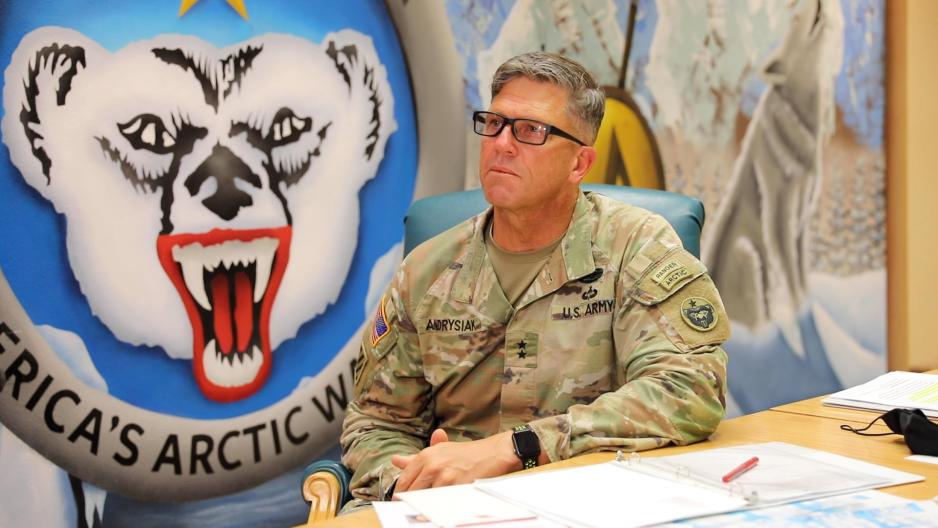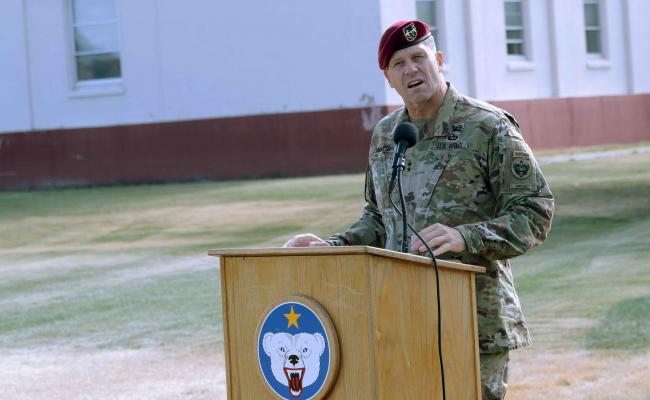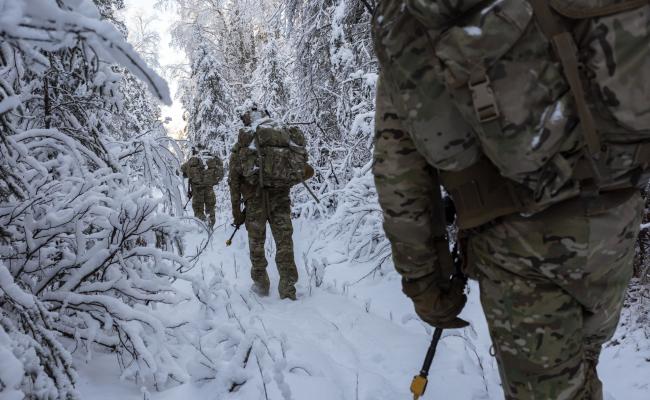US Army Arctic Strategy: "A Wholesale Change"

Major General Peter Andrysiak, Commander of the U.S. Army Alaska, explains that the U.S. Army needs to regain skills in operating in the Arctic environment. US Army Alaska (USARAK) is a unit within the Alaskan Command, US Northern Command. (U.S. Army photo).
Major General Peter Andrysiak, Commander of the US Army Alaska, emphasizes the need for the US Army to rebuild high-end skills to operate in the Arctic environment. Moving forward, he says, there is a lot to learn from European allies and partners.
“Our ability to conduct effective and extended operations in the Arctic requires a lot more than just a couple of pieces of unique equipment. This is really a wholesale change in terms of doing this correctly", Peter Andrysiak, Commander of the U.S. Army Alaska, told reporters as he spoke about the new US Army Arctic Strategy during a press conference Wednesday.
The US Army has a long history of operating in the Arctic environment, Andrysiak mentioned. However, niche skills built up over many years were gone for periods of time with changes, amongst others as a result from the war on terror and operations overseas.
The Major General said the new US Army Arctic strategy entails a multi-year approach, emphasizing the need to rebuild high-end skills to operate in the Arctic.
Filling gaps
The US Army will have to identify gaps and figure out how it can reinvest, he explained, noting that the Army is already working on what structural changes that is going to have to follow in order for it to be able to operate in the unique Arctic environment.
"For us here internally, we already know what we are going to do in the summer. We have to use the whole of the summers to actually set conditions to go into the field in the winter to be successful. We have to be prepared going into the winter and the units are retraining and beginning right now to set conditions for next year", Andrysiak continued.
The expertise still resides here, but we got a lot to learn from our allies and partners.
Working with allies and partners
As part of the new strategy, the Army further highlights the importance of engagement with allies and partners. Andrysiak mentioned the aim is to eventually get out to European allies and partners to start learning from them.
On a question from High North News about what the US Army Alaska potentially could do with allies such as Norway in terms of cooperation, Andrysiak said USARAK has not worked extensively on relationships with allies and partners in the European Arctic, as the unit in the past has focused on getting in and out of the CENTCOM [Central Command] area of operations. However, as part of the Arctic strategy endeavor and USARAK being the Army's proponent for cold-weather operations, it has been given a green light to start working with other allies and partners such as Norway, he explained.
"We know that there is a lot that we have to learn. Norway has history of being able to operate in and through that particular environment. We need to do some exchanges and learn from each other. There are probably some things that we need to take into account, that Norway is already doing and doing correctly."
“The sense of urgency is there”
The new Arctic Strategy is designed to create a force that can rapidly generate and project multi-domain forces globally, that are sufficiently equipped and sustained to fight in extreme-cold weather, rugged and mountainous conditions over extended periods, as well as having the ability to move forces in and through the Arctic, the Major General explained.
"There is a pace with which this is moving out", Major General Andrysiak said, noting that Army senior leaders started the endeavor of developing the Arctic strategy in July last year.
The US Army is among the branches of the US military that has recently published an Arctic Strategy, with the US Air Force in 2020 and US Navy in January 2021.The increased focus towards the Arctic seems to be a common denominator across the United States defense sector.



